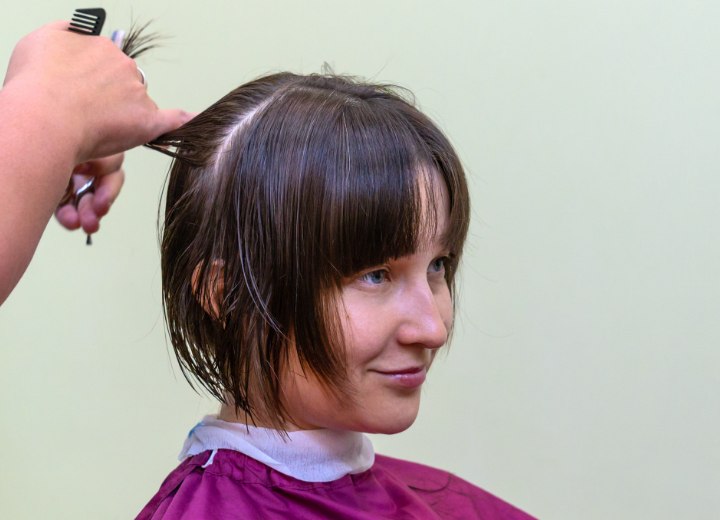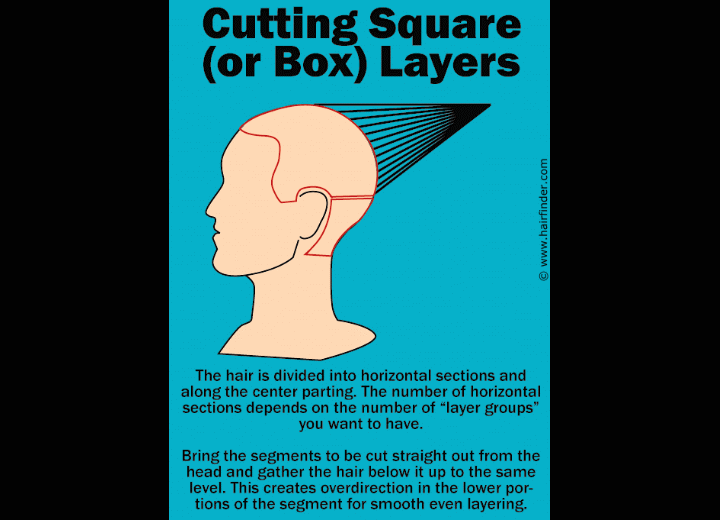Box Layers

A: Box Layers (or box layering) is a technique where the upper layers of the hair are cut into layers with a strong perimeter hairline.
To create the box layers, cut the hair using a stationary guide at the top of the head, at the center parting. Cut your guide to the desired length at the front hairline or behind the bangs. In some cases you may want to use the bangs as your guide. Work in small sections starting at the front guide and working your way back. Hold these sections straight up from the head and cut your guide length. This is known as 180-degree elevation.

As you cut the center sections at the top, be sure to stop at the back of the head around the occipital bone so that you avoid cutting into the perimeter line. You should also leave down 1/2 inch on each side to avoid cutting into the perimeter on the sides. You can blend the lower sections on the sides and in back after you've finished layering the hair.
Cut the center hair first, then take small sections from alternating sides and cut to the top guide length, slowly working front-to-back, and from side to side. You can get more accurate cutting by working from the side in this process. This process is time-consuming, but will give the best results.
As you get more practiced, you can switch to a faster method where once your center guide cut has been completed front to back, you can take vertical sections (working from the front of the head or the back) and cut them to the guide length.
©Hairfinder.com
See also:
How to cut square layers or box layers
Box layering technique
What is the difference between square layers and vertical layers?
Can you explain the terms square, round, concave, and convex layers?